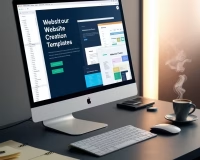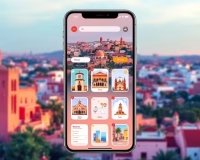Certainly registration is one thing, but to differentiate yourself or rather get yourself noticed and thus obtain a denser network, optimizing your profile is very important. We give you some tips for this. So How to have the best Linkedin page?
1. Write a relevant headline
This is what should catch the eye of the person viewing your profile. Never say that you are available or looking for this or that position. You must demonstrate what skills you are prepared to offer to a company or what advice and services you are able to offer to your potential clients. Keywords will be what determines your visibility on the social network .
Examples:
- Seller representing placier in equipment for miller
- Chartered accountant for small and medium-sized businesses
- Web marketing specialist applied to early-stage start-ups in the Montreal region
- etc.
2. Post an eye-catching photo
Appearance is important on Linkedin, absolutely put a profile photo , some recruiters don’t even bother to look at profiles without a photo. An American teleshopping show showed that 19% of recruiters only looked at the photo . In addition, your photo must be professional , but not too serious, you are there to show your personality too!
3. Create a summary that suits you
What we advise you to do is to make your summary like a story-telling . That is to say romanticize your journey a little. Show that each professional experience and training has a logical sequence and that all this leads you to apply for this job or that is why your company sells this service. Additionally, write in the first person singular , it is more direct and more personal.
4. Use the multimedia available to you
Linkedin offers you the possibility to add videos , photos and links for your summary, your professional experiences or your training, so don’t wait any longer! This is the best way to illustrate and make your information attractive and arousing interest . You can insert a URL link for your internship thesis or your final thesis, the articles you have published, photos of your diplomas, videos of oral exams won, projects you have carried out , etc. The goal of a Linkedin profile is to insert all the relevant information that shows your abilities and sets you apart, so don’t try to recreate your classic CV.
5. Create a business page
First of all, inform your employees if you have any, and your company logo will appear in their “professional experience” section . Inform your customers by inviting them to join the Linkedin page. Thanks to this you will obtain a certain visibility . Content is king on a business page , so bet everything on the quality of the posts you publish, even if it means having only one post each week, rather than publishing something every day that will not attract anyone’s attention and will keep you away from your target. If you succeed in this, you will have every chance of getting follow-ups .
6. Get Recommendations
The recommendations concerning you will have the role of establishing your skills, your expertise and this will reassure you about the reliability of your profile. You can obtain them from your former university professors, work colleagues or former employer by simply asking them. Getting 10 recommendations would be ideal for your profile.
7. Change your page to multilingual
Do you have potential clients abroad, do you aspire to an international career? A feature on Linkedin allows you to change your profile to as many languages as you want. Instead of having a profile only in English or a profile where you alternate between English and French, this option will be very useful for you to be understandable by everyone around the world. If you have done all of this, a bubble next to it will tell you the strength of your profile based on the information you have inserted. The objective would be to have an expert level demonstrating the quality of your Linkedin page.
What mistakes to avoid on a Linkedin page?
1. Remove your old jobs
In a classic CV, you choose the professional experiences that will be useful for the next position you aspire to. On Linkedin, think differently . Even the simplest jobs, such as cashier and summer jobs, etc., can show your perseverance and ability to bounce back . You don’t know what qualities an employer or client wants from you. So, list all your experiences, you will surely be surprised by the expectations of your interlocutors.
2. Wait until you are offered the right opportunity
Many users create a profile and just wait for someone to contact them. However, this is the best way to fall into the oblivion of Linkedin profiles. Update your profile regularly , share and like articles that interest you and join groups that suit you. Groups are profile communities sharing general characteristics or working in equivalent or complementary fields. This will allow you to interact with them, get help in a specific area and perhaps expand your professional network .
3. Making grammar and spelling errors
Where a classic CV and your Linkedin page meet is the expression . Although it is a social network, it is professional; so, don’t take it lightly if you sign up. Making mistakes can happen, but not proofreading is intolerable in the professional sphere. Your grammar as well as your spelling must be impeccable , the seriousness of your profile depends on it. So, don’t be afraid to ask someone in your family or a friend to proofread you. For those who have great difficulty with spelling, the paid software Antidote will be your best friend for this. Be careful not to fall into one of the 7 deadly sins of the entrepreneur!
The extra advice
Register even if you are a student
Are you a student and you have the ambition to eventually become an entrepreneur? You will therefore surely need resource people , people from whom you could ask for expertise. This goes through your network, so to not lose contact, register now, your teachers are surely already registered. What’s more, during your studies you will surely have internships to complete , a Linkedin profile will be an undeniable advantage compared to other students. Finally, when you mention your training, your universities generally have a “school” page on Linkedin. This creates a community of former students and we all know the weight of sponsorship and support networks between students of the same university or business school.
Read More: How to Deploy an Effective Social Media Strategy?




